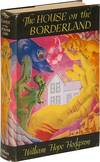
Map of a Part of the City of Richmond Showing the Burnt Districts
by Ludwig, C[harles]. L. (del.)
- Used
- Condition
- See description
- Seller
-
Arrowsic, Maine, United States
Payment Methods Accepted
About This Item
A scarce plan of the former Confederate capital, created and published there shortly after Union forces took the city in April of 1865, depicting in black the parts of the city that were burned to the ground by the fleeing Confederates.
On Sunday morning April 2nd 1865, news reached Richmond that the Army of the Potomac had broken through the rebel lines defending the city. The subsequent evacuation swiftly descended into chaos-the burning of warehouses to prevent their seizure by Union forces turning into a fire that consumed a good portion of the city's center. The present map shows the scope of the conflagration, with areas burned in the fire of April 2-3 depicted in black, including various city blocks and three bridges over the James River purposely torched by the retreating Confederates. Also shown are such features of the city as the Navy Yard, the Capitol, rail lines, the canal complex (which provided power to Richmond's manufacturing sites), and various islands in the James River.
The publisher of this map, William Ira Smith, was a Unionist who became the publisher of the Richmond Whig following the occupation. On April 4th, the following account of the burning of the city appeared in the Whig, laying the blame squarely on the Confederates:
The evacuation of Richmond commenced in earnest Sunday night, closed at daylight on Monday morning with a terrific conflagration, which was kindled by the Confederate authorities, wantonly and recklessly applying the torch to Shockoe warehouse and other buildings in which was stored a large quantity of tobacco. The fire spread rapidly ... A fresh breeze was blowing from the South, and the fire swept over great space in an incredible short space of time. By noon the flames had transformed into a desert waste that portion of the city bounded between 7th and 15th streets ... We can form no estimate at this moment of the number of houses destroyed, but public and private they will certainly number 600 to 800 ... At sunrise on Monday morning, Richmond presented a spectacle that we hope never to witness again. The last of the Confederate officials had gone; the air was lurid with the smoke and flame of hundreds of houses sweltering in a sea of fire ... All the government store houses were thrown open, and what could not be gotten off by the government, was left to the people, who everywhere ahead of the flames, rushed in, and secured immense amounts of bacon, clothing, boots, &c. ... the distance of half a mile from the north side of Main street to the river, ... embracing upwards of twenty blocks, presents one waste of smoking ruins, blackened walls and broken chimnies.
Clearly intended to inform the public regarding the extensive damage to the city, this map was likely published very shortly after the evacuation. Given the occupation that followed, it seems likely that many of the surviving copies were preserved as souvenirs or mailed home by Union soldiers.
Born in Germany, lithographer Charles Ludwig (ca. 1827-1875) worked in Richmond prior to and during the Civil War, first in partnership with Lewis Hoyer until 1864 and then independently, as indicated by the credit on this map. Ludwig primarily engaged in currency and stamp printing for the Confederate government, but also produced a number of other maps such as Map of Utah Territory :
Showing the Routes Connecting it With California and the East (1858); Map of Virginia, Maryland &c. (1861); and Map showing the Battle Grounds of the Chickahominy (1862). The publication of the present map shows him adapting to altered circumstances, working for a Unionist newspaper publisher rather than his erstwhile Confederate employers.
While there are a number of institutional holdings for this map, the only copy on the market that we have been able to find was offered by Boston Rare Maps some years ago.
A scarce map showing the destructive results of the Confederate retreat from the fallen capital.
REFERENCES: Parrish & Willingham, #6202; Stephenson, Civil War Maps (2nd ed.), #641; Wooldridge, William C., "The Bucholtz-Ludwig Map of Virginia and Its Successors," The Portolan (Spring 2007).
Reviews
(Log in or Create an Account first!)
Details
- Seller
- James Arsenault & Company
(US)
- Seller's Inventory #
- 5903
- Title
- Map of a Part of the City of Richmond Showing the Burnt Districts
- Author
- Ludwig, C[harles]. L. (del.)
- Book Condition
- Used
- Quantity Available
- 1
- Publisher
- Richmond, VA: Published by Ira Smith, proprietor, Richmond Whig, [1865]
- Weight
- 0.00 lbs
Terms of Sale
James Arsenault & Company
About the Seller
James Arsenault & Company
About James Arsenault & Company
Glossary
Some terminology that may be used in this description includes:
Also Recommended
-

Save 10% on every purchase!
Join the Bibliophiles’ Club and start saving 10% on every book.
$29.95 / Year


![Knight Hospital Record, Vol. 1, No. 1-Vol. 1, No. 40. Jerome Coan [cover-title]](https://d3525k1ryd2155.cloudfront.net/h/521/521/1325521521.0.m.jpg)

![The Repeal, or the Funeral of Miss Ame[rican]=Stamp](https://d3525k1ryd2155.cloudfront.net/h/838/417/1388417838.0.m.jpg)
